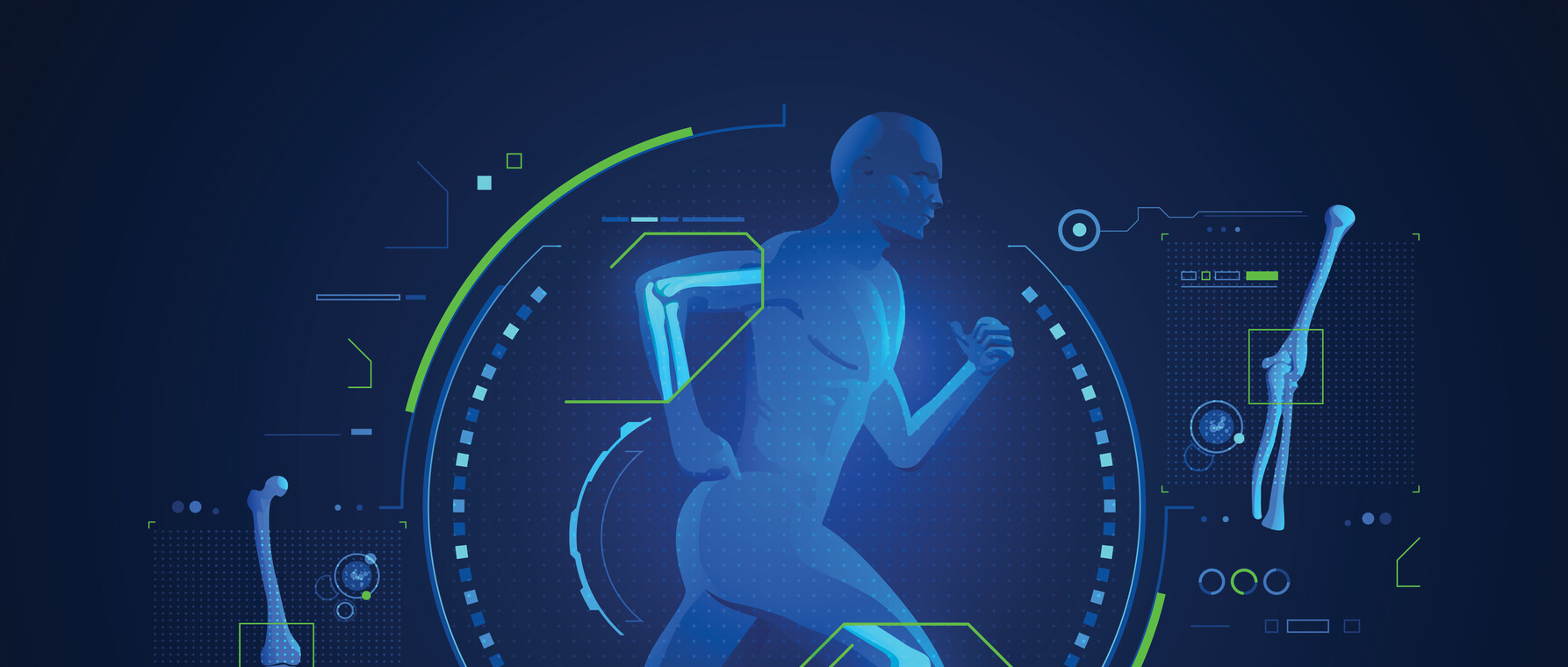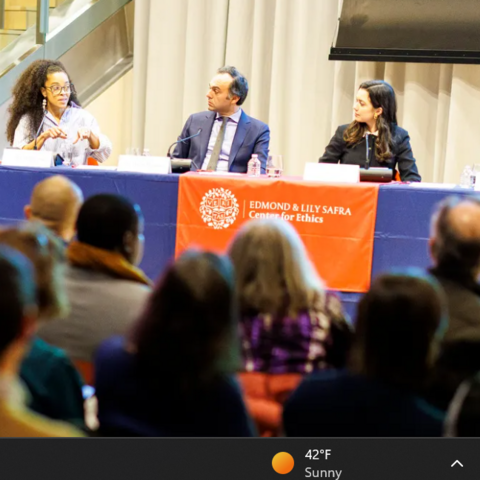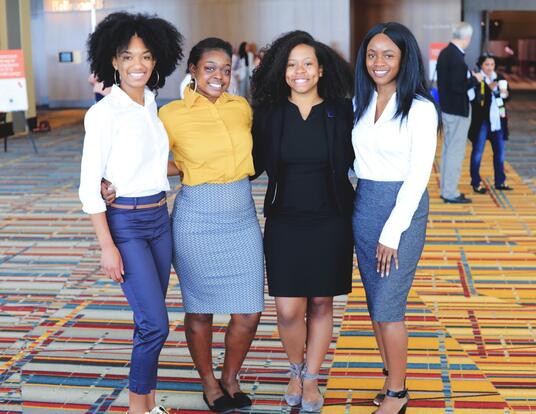Signal of Strength
How muscles communicate to regenerate and repair

Research at Risk: Since World War II, universities have worked with the federal government to create an innovation ecosystem that has yielded life-changing progress. Now much of that work may be halted as funding is withdrawn. Find out more about the threats to medical, engineering, and scientific research, as well as how Harvard is fighting to preserve this work—and the University's core values.
Exercise is good for you. Really good for you. Not only does regular exercise help prevent and manage a raft of illnesses including stroke, type 2 diabetes, arthritis, and many types of cancer, it also helps with depression and anxiety, improves cognitive function, and simply makes us stronger and healthier. Moreover, the benefits of exercise grow as we age and get more vulnerable to disease and loss of muscle mass. That’s why it’s so important to stay active as we get older.
As much as we know about its benefits, however, there is still a lot we don’t know about the way that exercise works on the molecular and cellular levels. Anita Reddy, a PhD student in biological and biomedical sciences at the Graduate School of Arts and Sciences, is trying to fill in some of those gaps. In the Harvard Medical School (HMS) lab of Assistant Professor of Cell Biology Edward Chouchani, Reddy explores the ways that muscles signal to cells involved in regeneration and repair. She says that the more we know about this process, the better we can understand the ways our bodies respond to exertion and the impact that exercise has on disease.
Rip and Repair

Let’s say you go to the gym and lift weights. The strain creates microtears in muscles that signal to a wide variety of cell types, including immune cells, motor neurons, and the satellite cells responsible for muscle regeneration. But what are those signals? Where do they come from? And what is their vehicle? Those are some of the questions that Reddy and her colleagues at the Chouchani Lab wanted to investigate.
“We wanted to know how exercising muscles communicate with various non-myofibril (non-muscle) cells to cause remodeling events to occur,” Reddy says. “When we were thinking about potential classes of molecules that could be the signal carriers, we thought metabolites could fit the role.”
Metabolites are small molecules that are converted, through a series of biochemical reactions, into adenosine triphosphate, the main carrier of energy in cells. Because exercise is such an energy-intensive process, Reddy and her colleagues suspected that metabolites played a key role in the signaling process that initiates muscle remodeling. They tested their hypothesis in experiments on mice.
“We found that, during exercise, the metabolite succinate is selectively released from exercising muscles,” Reddy says. “It signals to non-muscle cells—specifically stromal cells—that play an important role in muscle repair. When succinate was released, there was an increase in the muscle motor neurons and the strength of our mice.”
Reddy stresses that she and her colleagues have identified one signaling event out of many that occur during the complex process of exercise. In that sense, her work is a piece in a much larger puzzle that scientists are trying to put together: the way that signaling pathways form in muscles and the role they play in the huge systemic benefits to human health provided by exercise.
“We now know that succinate is involved in increasing motor neurons in muscles,” she says. “That’s really important because increased muscle innervation leads to increased strength. Increased strength helps with the prevention of arthritis and bone fractures. Also, peak succinate release is correlated with increased insulin sensitivity and capacity to take up glucose in the blood and use it in muscles. That’s critical for people with diabetes.”
Reddy’s advisor, Professor Ed Chouchani, says that her discovery that exercising muscles selectively release the metabolite succinate was unexpected. Succinate had been thought to remain trapped within cells. He says that this new understanding of the role the metabolite plays in muscle remodeling and adaptations to exercise could shape research in a number of areas.
We now know that succinate is involved in increasing motor neurons in muscles. That’s really important because increased muscle innervation leads to increased strength. Increased strength helps with the prevention of arthritis and bone fractures.
“We are eager to explore the implications of this model in states of physiological hypoxia (low oxygen levels) other than exercise, such as cancer,” he says. “We are also interested to test whether these molecules can recapitulate any of the muscle remodeling effects initiated by exercise-mediated release of endogenous succinate.”
Reddy says that, while it’s unlikely there will ever be an “exercise pill,” an understanding of the process through which muscle remodeling is initiated may help researchers someday to develop treatments that extend the benefits of exertion to those who may not be able to exercise.
“It's important to use your muscles in order to maintain muscle mass or to manage obesity and diabetes,” she says. “But what if you have severe arthritis or some other condition that limits your ability to move? We need to understand what's happening at the molecular level to potentially shed light on new therapies for situations when exercise, for one reason or another, just isn’t feasible.”
People To Look Up To
Reddy, the daughter of Indian immigrants, came to Harvard after growing up in Madison, Connecticut. Her father, an organic chemist, inspired her interest in science with weekend trips to the lab at the company where he worked. Reddy studied biology as an undergraduate at the University of Connecticut but still didn’t think research was “in the cards” for her. Then, after graduation, she joined the HMS lab of Professor of Cell Biology Marcia Haigis as a technician.
“It was at Haigis Lab that I really got a taste for metabolic research,” Reddy says. “I remember just loving my day-to-day work, loving the lab environment, loving being in academia. I only wished I could have more control over the experiments!”
At Haigis Lab, Reddy got a chance to see what the life of a PhD student at GSAS would be like. She worked with brilliant people at facilities as good as any in higher education, so her expectations were already high when she started graduate school. Even so, she says they’ve been exceeded by her actual experience.
“I feel like I have worked with some of the smartest people in the world,” she says. “And the instruments that we have access to…We can run some experiments in a day that might take a month at other institutions. It’s amazing.“
Despite the wealth of resources, a long PhD program could be rough going for a student of color without friends and support. Fortunately, Reddy says she’s found both at GSAS.
I feel like I have worked with some of the smartest people in the world,” she says. “And the instruments that we have access to…We can run some experiments in a day that might take a month at other institutions. It’s amazing.

“I feel incredibly supported by the people in my lab,” she says. “My principal investigator is always referring me to good mentors. I’m part of the Minority Biomedical Scientists of Harvard group, which enables me to connect with students of color in the sciences both academically and socially. I’ve found people that I can really look up to and confide in as well, even about non-lab-related things.”
As she nears graduation, Reddy has a lot of options. The world-class biotechnology firms that saturate the Cambridge/Boston area would certainly clamor for a young scientist who has already made significant discoveries in her field. Still, she says that she’d like to continue to work in academia and perhaps shift her focus to a burgeoning area of research: the human microbiome.
“I’m becoming more and more interested in the way that our gut bacteria generate millions of different types of metabolites and influence our whole metabolism,” she says. “It would be very interesting to see the connection between the gut microbiome, exercise, and type 2 diabetes. How does the gut of an Olympian athlete, for instance, differ from that of a ‘normal person,’ and how does that play a role in our overall metabolic health?”
Photo by Tony Rinaldo; Banner Illustration courtesy of Shutterstock
Get the Latest Updates
Join Our Newsletter
Subscribe to Colloquy Podcast
Simplecast





